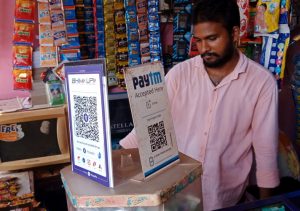Last November saw the release of the e-Conomy SEA 2020 report, which highlighted just how significant an impact the COVID-19 pandemic has had on the uptake of digital platforms technologies across Southeast Asia.
Conducted jointly by Google, Singapore’s Temasek, and the venture capital firm Bain & Company, the report showed that in Southeast Asia’s six largest economies – Indonesia, Malaysia, Singapore, Thailand, the Philippines and Vietnam – 40 million people came online for the first time in 2020. This brought the total number of internet users in the region to 400 million – around 70 percent of these countries’ populations – up from 250 million in 2015.
At the same time, the size of the region’s internet economy exceeded $100 billion for the first time in 2020. If the trend held, the report predicted, this figure will likely triple to more than $300 billion by 2025.
The report revealed the extent to which the pandemic – with its concatenation of lockdowns, social distancing, and other restrictions on daily life – had accelerated the profound digital shift that was already underway.
Now, another report adds more detail to the everyday impacts of the pandemic has had, particularly on daily consumer spending habits. The Mastercard New Payments Index, released on May 4, found that the uptake of digital payment technologies has accelerated in the Asia-Pacific in parallel with the onset of the COVID-19 pandemic.
The report’s primary finding is that 94 percent of people say they will consider using at least one emerging payment method in the coming year. These include technologies such as QR codes, digital or mobile wallets, installment plans, cryptocurrencies, biometrics, among others.
The Mastercard report surveyed just three Asia-Pacific nations – Thailand, India, and Australia – but it nonetheless demonstrated the extent to which the pandemic has accelerated the shift to new payment technologies while crowding older methods of transaction, including cash. It also accords with the anecdotal evidence from many other parts of Asia, where mobile payment wallets and QR codes are fast becoming ubiquitous, even in rural areas where cash was once king.
The report found that 88 percent of the respondents in these three nations used at least one emerging payment type over the past year. Nearly two-thirds said that they tried a new payment methods that they would not have tried were it not for COVID-19, a figure that rose to 75 percent for millennials.
“Mastercard’s study finds that people in the Asia Pacific region haven’t just adopted new payment technologies – they’ve made deliberate shifts based partly on necessity, but also on considerations around personal safety, security and convenience, at a time when these concerns were paramount,” Sandeep Malhotra, Mastercard’s Executive Vice President for Products & Innovation, said in a statement accompanying the report’s release.
To a large extent, these findings tracked global trends. In the first quarter of 2021, for instance, Mastercard saw 1 billion more contactless (i.e. card-free) transactions globally as compared to the same period of 2020. In India and Thailand, the use of contactless transactions grew by twofold and fourfold, respectively, over the same period of time.
This signifies the impending domination of digital payment techniques in the Asia-Pacific, after a decade of breakneck adoption of digital technologies, social media networks, and web-enabled smartphones. The report confirms, as Malhotra put it, that the trend “is only set to continue as more digital payment options rapidly become mainstream in this part of the world.”
































